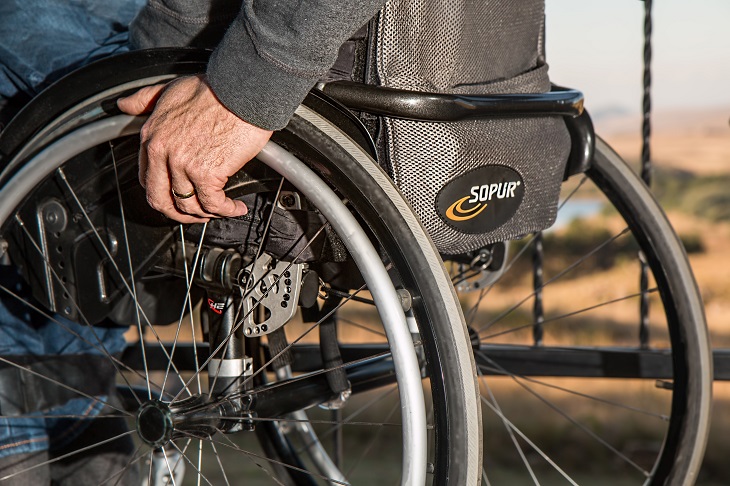Several impressive vehicle adaptations make it possible for people with physical disabilities and mobility issues to drive their own vehicle. Some of these adaptations are simple devices that change the dimensions of a vehicle by bringing foot pedals or the steering wheel closer. Other adaptations are high-tech electronic devices that would have been impossible to imagine only a handful of years ago.
Modern technology has made it easier than ever for people with disabilities to enjoy the freedom and independence that driving provides. New technologies are being developed every year, and vehicle adaptation options for disabled drivers are expanding all the time.
In the United States, most vehicles have automatic transmission. Most Americans believe that an automatic car is easier to drive. Today, even most newer model semi trucks, which traditionally tended to have manual gears, are fitted with automatic transmission. However, many older vehicles still have manual transmission, and a number of drivers still prefer the experience of driving a stick-shift vehicle.
Hand controls are the most common form of vehicle adaptation for disabled drivers. So what are the hand control options for manual vehicles? Can hand controls be fitted to a manual car? How much do hand controls for manual vehicles cost? How do you drive a manual hand drive car? Let’s investigate.

Who Are Hand Controls For?
Hand controls are usually used by people who, due to a physical disability, cannot use their legs and feet to operate the pedals in a vehicle.
What Are The Most Common Hand Control Adaptations?
The most common hand control adaptations are:
- Push/pull hand controls
- Electronic hand accelerators/brakes (trigger accelerator, over ring accelerator, under ring accelerator, ghost ring accelerator)
- Remote control device mounted on the steering wheel that operates standard vehicle controls such as headlights, indicators, and wipers
- Steering wheel extension
- Steering ball mounted on the steering wheel
How Much Do Hand Controls Cost?
The cost of hand controls varies widely, depending on the type you need. Steering wheel extensions can cost as little as $50, while full electronic hand accelerator/brake systems can cost between $500 and $2000.
Does Using Hand Controls Require Special Training?
It is advisable to get special training when first using most forms of hand controls. For a new driver, or a newly disabled driver, it is best to take lessons with a driving instructor who specializes in disabled driving.
Most densely populated areas of the US have disabled driving schools. You should be able to find a driving school near you with specialist disabled driving instructors, or an independent instructor with expertise in training disabled drivers.
Can Hand Controls Be Fitted To A Manual Car?
Yes, hand controls can absolutely be fitted to a manual car. All of the most common types of hand controls mentioned above can be used on a manual vehicle. In addition, there are several adaptations that allow a disabled driver to operate a manual vehicle’s clutch with their hand.
What Is A Manual Transmission Hand Clutch Conversion?
A manual transmission hand clutch conversion enables a driver to operate the clutch on a manual vehicle with their hand. The two most common types are:
- An infrared sensor on the gear lever that automatically depresses the clutch when the hand is placed on the gear lever
- A “duck clutch”, which has a small lever fitted to the gear lever that enables hand control of the clutch

Who Qualifies For A Disabled Parking Permit?
Any person who does not have the ability to use their legs or feet to control a vehicle, and therefore needs to use hand controls, will qualify for a disabled parking permit.
In general, the qualifying conditions for a disabled parking permit are:
- An inability to walk 200 ft without needing to stop to rest
- An inability to walk without the aid of a crutch, cane, wheelchair, prosthetic device, or another person
- A heart condition
- Lung disease
- Any condition that necessitates the use of a portable oxygen tank
- Legal blindness
- Any arthritic, orthopedic, or neurological condition that reduces mobility
What Types Of Disabled Permit Are Available?
The most common types of disabled parking permit available are:
- Permanent disabled parking placard or license plate
- Temporary disabled parking placard
- Disabled Veterans license plate
- Organizational disabled parking permit
How To Get A Disabled Parking Permit
The quickest way to get a disabled parking permit is to arrange an online telemedicine consultation with a licensed medical professional through Dr. Handicap. The medical professional will verify your disability and fill in the relevant sections of a disabled parking application form, which you can then submit to your local DMV. It is a quick and easy process.
Featured image by cocoparisienne on Pixabay